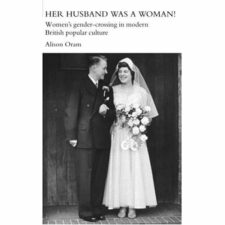At particular moments in history, women have thought to be more emotional than men. The Victorians thought women were more emotionally unstable and inclined to hysteria. As late as 1912, one prominent doctor in the UK was arguing that women were hypersensitive, unreasonable and that it was the destiny of the entire sex to eventually go insane (and thus they should be confined to the domestic sphere)! But, how we understand, express and even experience emotion is not unchanging over time.
The history of emotions is a growing field that explores how people expressed and (as best as we can figure out) experienced emotions in past societies. It is an interdisciplinary field drawing on traditional historical sources, but also using theory from psychology, biology, neuroscience, physiology, and methodologies from art history, musicology, and literary and cultural theory.
How emotions work is a matter of debate and different fields have different ideas on the subject. Some theories, notably in psychology, argue that some emotions, like fear and motherly love, are inherited and instinctual, traces of our evolutionary past, whilst others are cultural – learned in childhood and specific to particular societies. But more recently, some theorists have gone further to suggest that all emotions are learned and that the biological response is a taught reaction. This does not mean that the physical reaction is not real, but rather there is increasing awareness of the malleability of the physical body. Such understandings tend to draw on the neuroscience of child development, which shows the way that the way the brain works is not set in stone, but created in the first few years of life and can differ between people and across cultures. We have come to understand that the body is not a ‘universal’, identical across time and space, but a product of cultures. So, we know that much of our physical shape (height, proportional difference between waist, hips and chest, average weight, etc) are a product of our diets and the types of physical activity we do, as well as our genetics. Similarly, the brain is trained to work in particular ways that are manifested in its physical workings. In both cases, the early years of life are crucial to our future selves, as the body becomes less malleable as we age.
These same theories can then be applied to our understandings of emotions, so that we can see that emotions are not the inevitable products of biology, but we are given an emotional education which in turn trains our body to react in particular ways to particular stimuli. As a result, emotions become historically and geographically dependent, shaped by the cultures people are born and raised within. And this, of course, makes it an exciting field of study, as we can no longer assume that our ancestors felt similarly to us.
As importantly, it also has significant implications for how we understand ourselves. One of the reasons why history is important more generally is that it reminds us that the way we do things today is not the way things have always been done. This in turn allows us to realise that we do not need to do things similarly in the future, encouraging us to think more imaginatively and more dynamically about our life choices and the way we want to live as individuals and a society. The history of emotions reinforces these creative potentialities by destabilising those most ‘natural’ and ‘unchanging’ of things: our bodies and our feelings.
Katie Barclay is working on a history of how our emotional reactions shaped law and governance in the eighteenth century. She is a historian in the ARC Centre for the History of Emotions at Adelaide.
